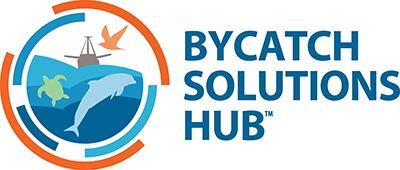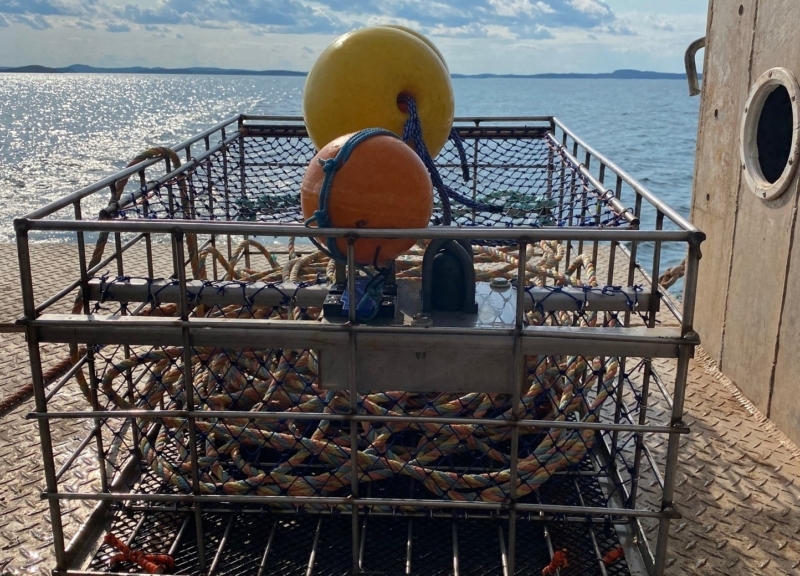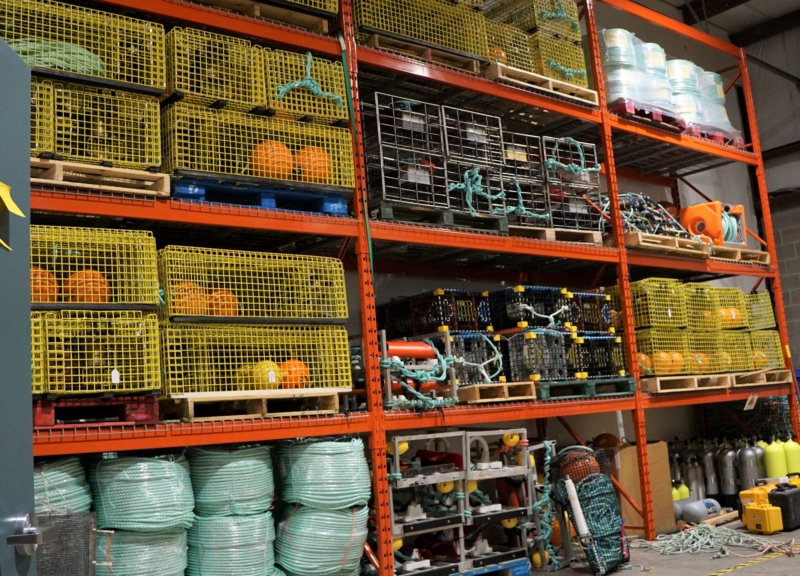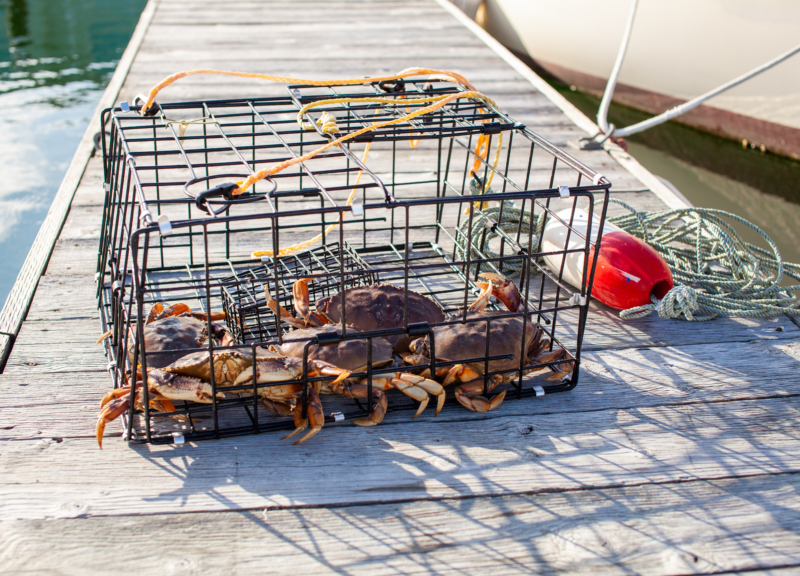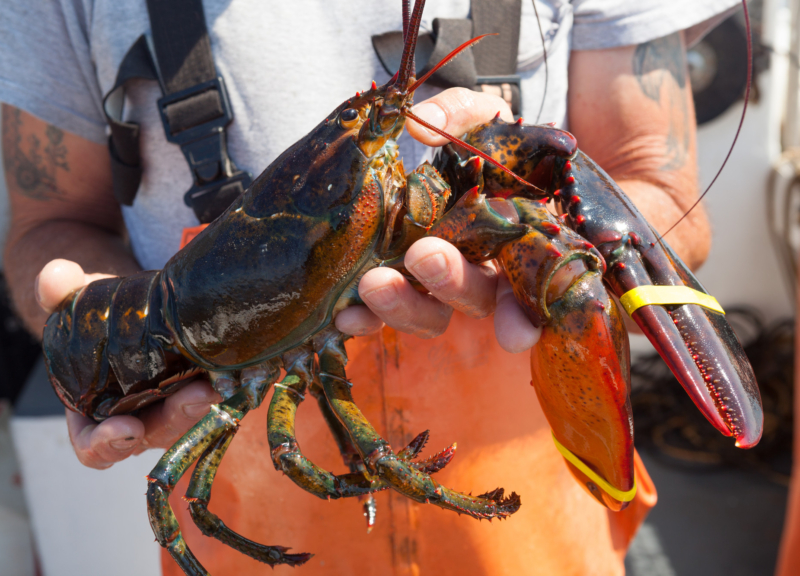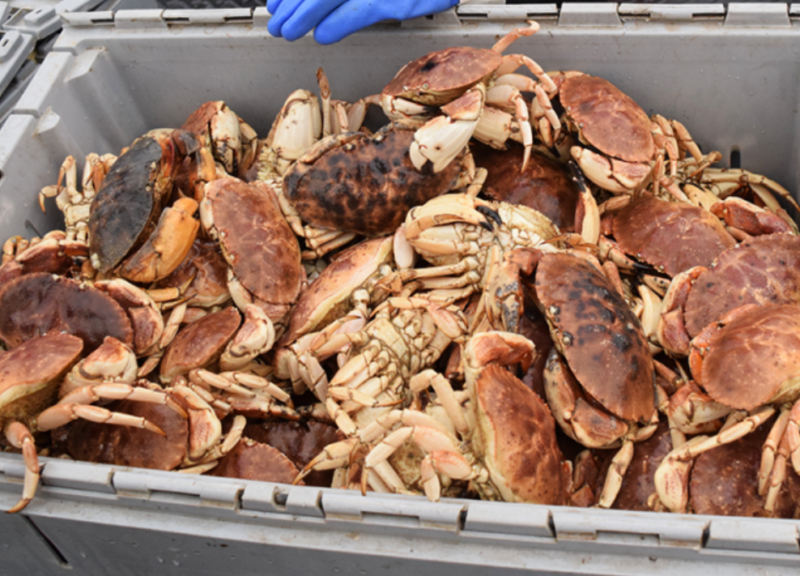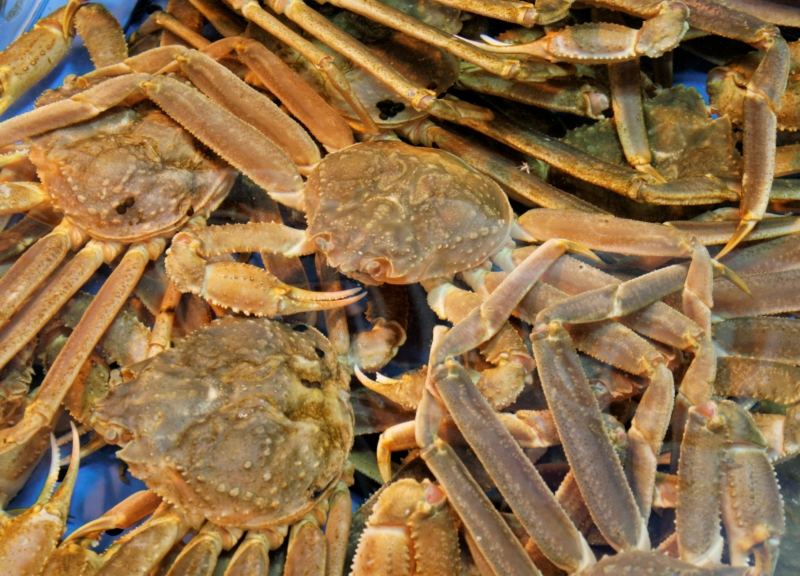Pot and Trap
Whale-Safe Gear Innovation
Incorporating new technologies can ensure a sustainable future for pot and trap fisheries AND protect whales.
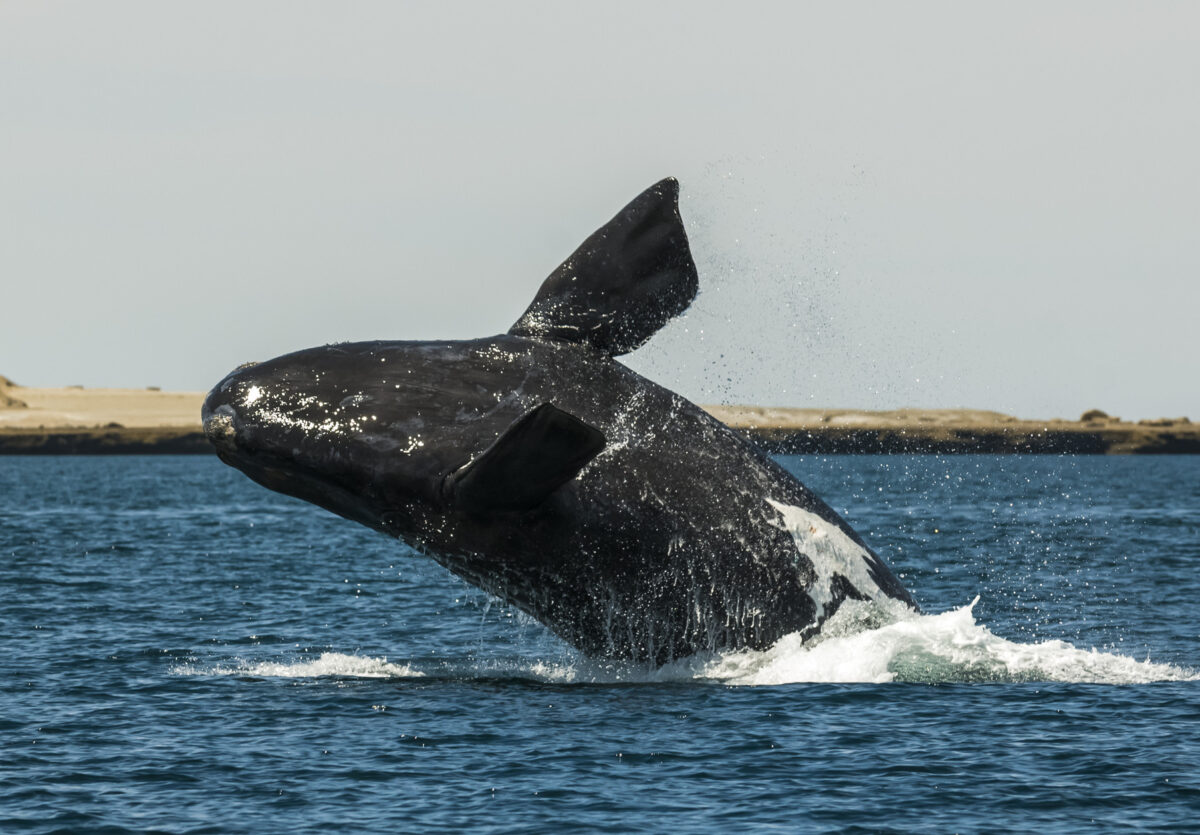
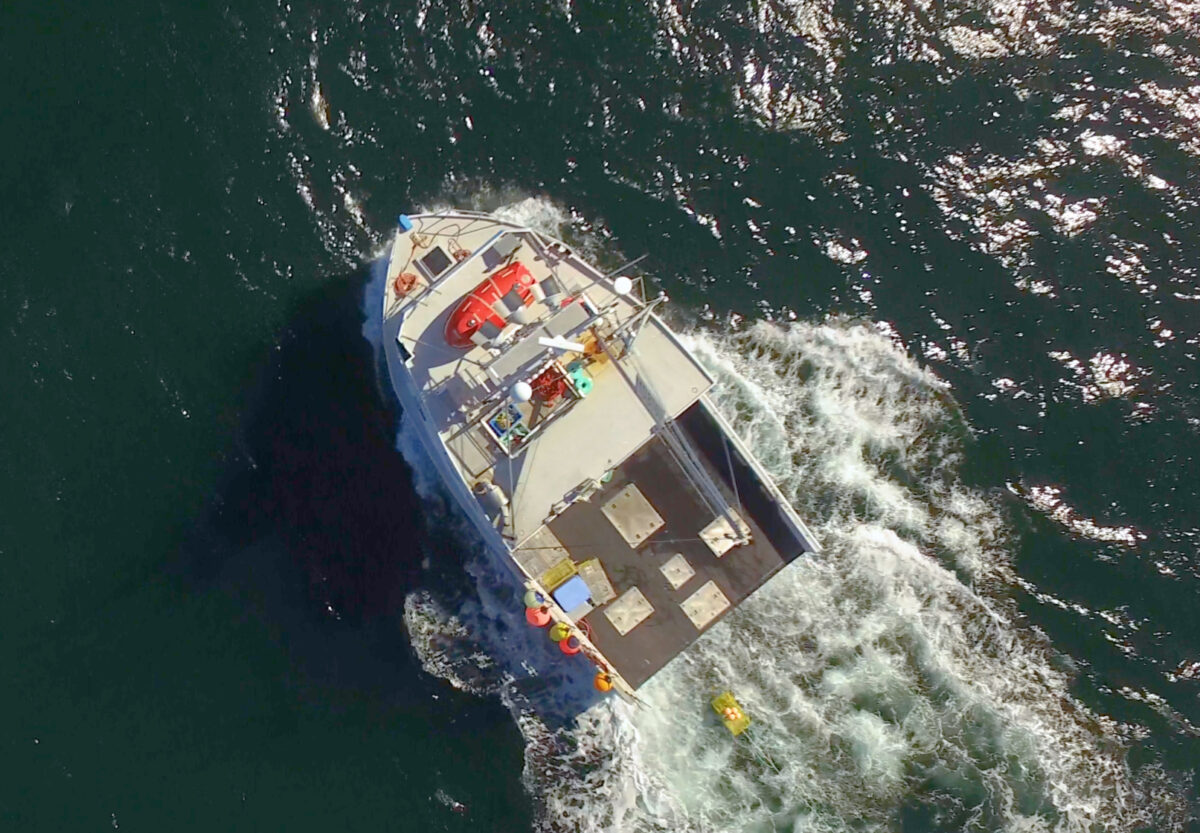
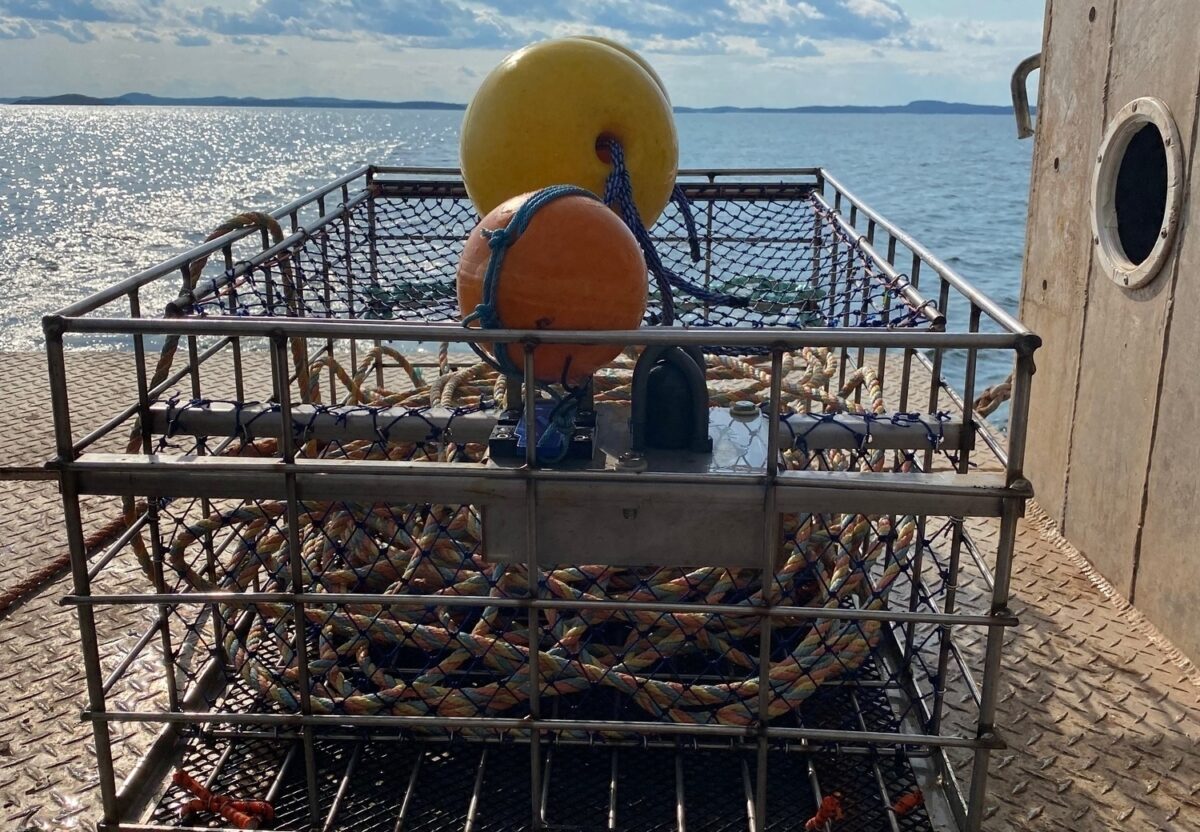
Pot and trap fisheries include some of the most important fisheries in the US and Canada, contributing significant economic value and generating large quantities of seafood for domestic and international consumption. In Maine and Massachusetts, the combined 2025 lobster catch to date is over 110 million lbs., valued at more than 850 million US Dollars. While in Canada, the snow crab catch between Newfoundland and Labrador and the Gulf of St Lawrence is over 138 million lbs., valued over 700 million US Dollar. Other notable fisheries in North America include Canadian lobster, northeast US Jonah Crab, southeast US black sea bass, and west coast Dungeness crab and black cod (sablefish).
The increase in human-caused whale mortalities has led the US National Oceanic and Atmospheric Administration (NOAA) to declare an Unusual Mortality Event for North Atlantic right whales (NARWs), humpback whales, and minke whales in the Northern Atlantic since the start of 2017. This has led to a downgrade in classification of these fisheries from multiple seafood consumer guides and sustainability certifications, creating instability in the market and the lives of seafood harvesters.
Because of this threat, selected pot and trap fishing grounds are subject to seasonally closures and restrictions of traditional gear types. While this can protect whales, fishers can be restricted from accessing financially valuable fishing grounds. By participating in the use of new gear technologies, particularly on-demand gear (also called ropeless fishing), through Fishery Improvement Projects (FIPs) and gear lending libraries programs, fishers have opportunities to access closed areas and continue to earn a living amid changing regulations for static rope gear.
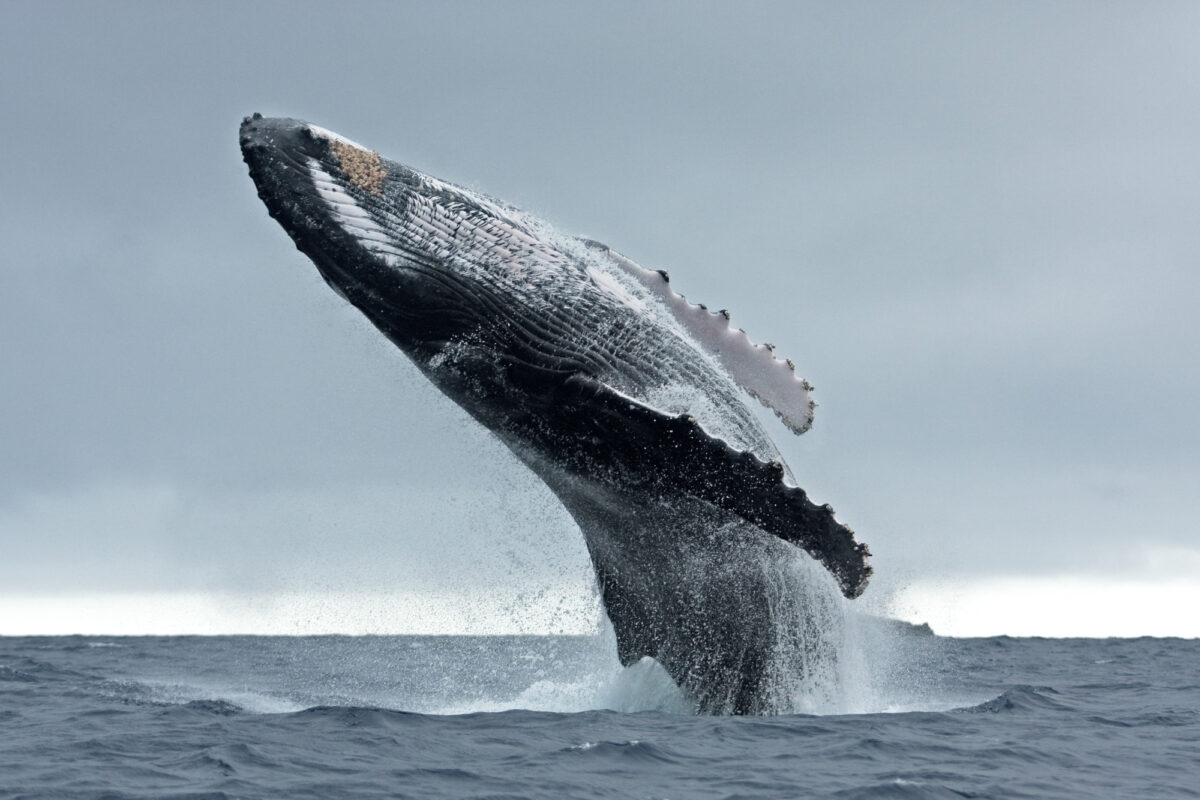
Humpback whale breaching.
The Problem - Whale Entanglements
Whales migration between feeding grounds in the northern Atlantic in the summer and calving grounds in the southern Atlantic in the winter (see the North Atlantic right whale migration map on the right) take them across major trap and pot fishing zones where thousands of vertical buoy lines present entanglement risks. While these migrations have always occurred, changes in the whales migration, due to prey movement, between their feeding and calving grounds have increasingly brought them into contact with fishing gear. As the whales’ food move, the whales move with them. However, it has become harder to predict exactly where this movement will occur and therefore harder to manage fisheries to prevent gear from being set in areas where whales are present.
This has led to an increase in encounters with buoy lines that can be difficult for whales to detect in the water. If they swim into a buoy line, they often get entangled and are unlikely to disentangle the rope on their own.
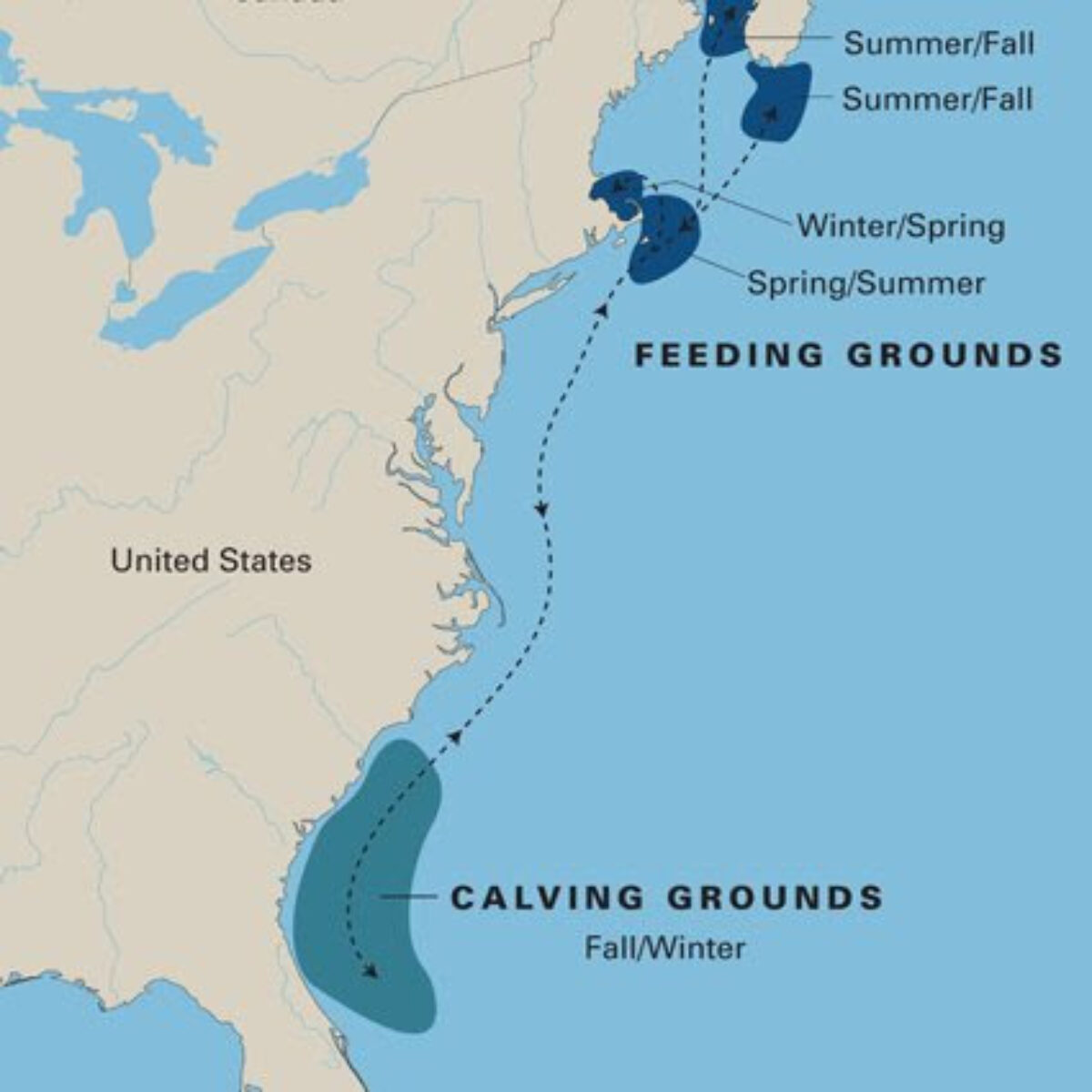
Illustration credit: E. Paul Oberlander, Woods Hole Oceanographic Institution Graphics; Data from North Atlantic Right Whale Consortium.
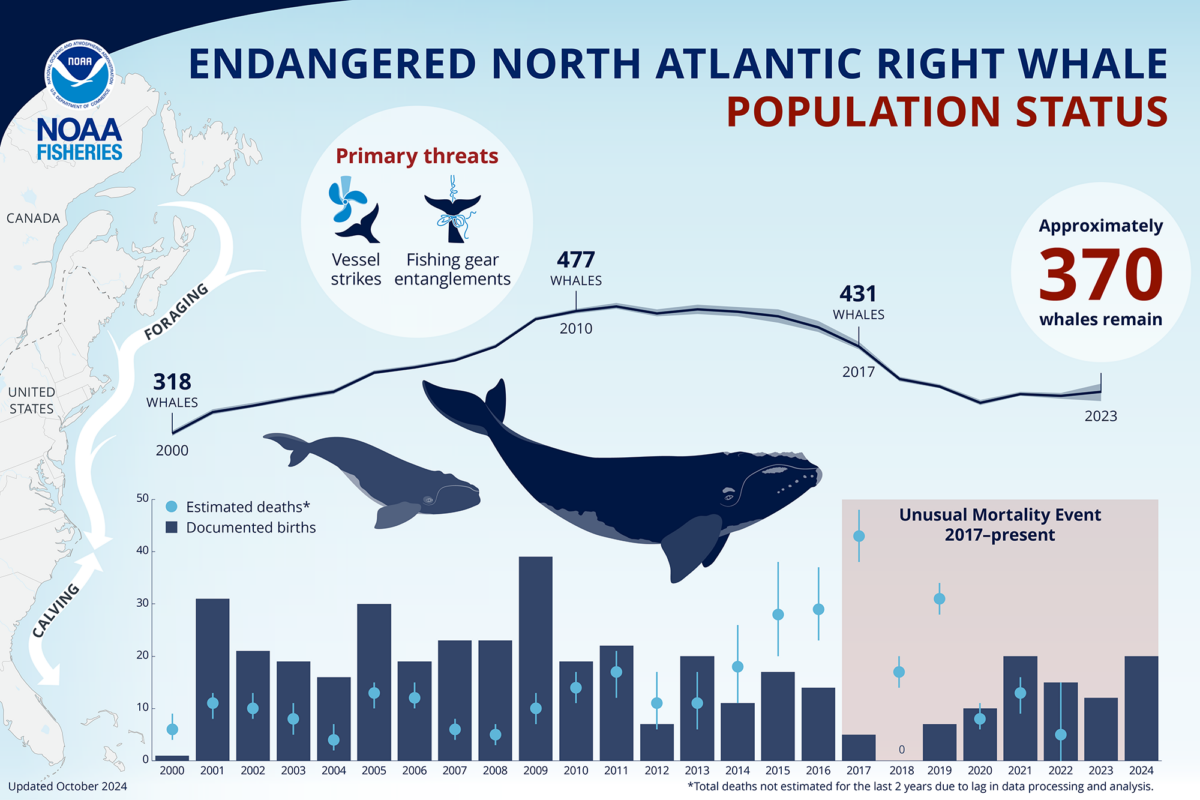
Estimates of population size, death rates, and growth rates for the NARS since 2000. Graphic courtesy of NOAA Fisheries.
This shift is clear when looking at the example of the North Atlantic right whale (NARW), a species of primary concern due to its endangered status. In the past, the NARW was nearly hunted to extinction. The abolition of the fishery and an emphasis on protecting the NARW led to a slowly recovering population until the mid 2010s, when deaths and serious injuries increased and birth rates decreased substantially creating a collapse in their recovery. Since 2017, these deaths (including serious injuries) have been confirmed to be predominately a result of fishing line entanglements (45 whales) and ship strikes (18 whales). Additionally, another 56 whales have been documented to be of poor health due to entanglement related causes and 8 whales due to ship strike.
While NARW get the most attention because of their highly endangered status, entanglements are also an increasing risk to other large whales from both the Atlantic and Pacific coasts, including humpback whales, minke whales and grey whales.
The Solutions
Reducing entanglement risk is dependent on removing buoy lines from the water column when the gear is not being actively tended by harvesters as well as developing new technologies for whale friendly gear. The use of on-demand gear as well as break away weak rope and links, time released mechanisms and smart buoys are on the way to revolutionizing the pot and trap fisheries and offering protection for whales and other marine species.
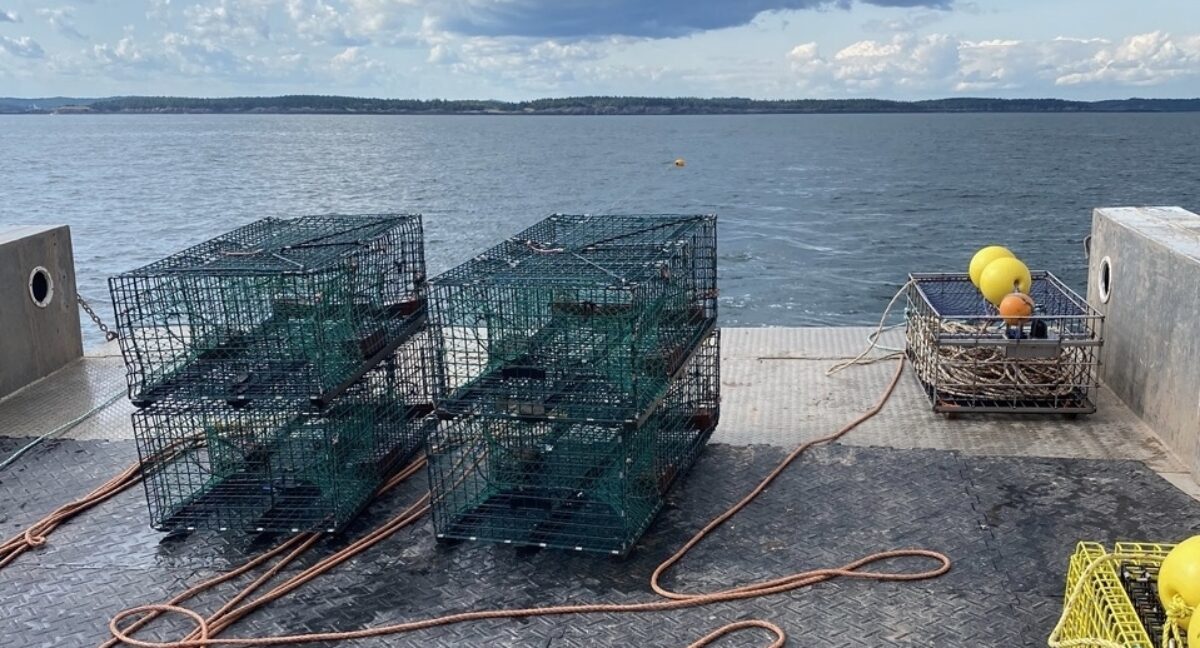
Ropeless system (on the right) with rope coiled inside attached to four traps and ready to be set. Photo credit: Ashored Innovations
Break Away Weak Ropes and Links
Break away weak rope and links have been demonstrated to reduce the engagement of whales in pot and trap gear. Weaker strands of rope or specialized links are incorporated at intervals along the vertical surface buoy line and are designed to break under pressure at approximately 1, 700 lbs. Research has shown that 1,700 lb. of tension is within range of breaking pressure that allows fishermen to safely haul traps while still allowing whales to break the rope, should they become entangled. Requirements for the use of break away buoy line are required under US Regulations and the Atlantic Large Whale Take Reduction Plan.
Although break away weak ropes and links assist as a management tool to reduce whale entanglements there is some concern that their effectiveness may vary, depending on the size whale and how the entanglement occurs. There are further concerns that the rope could break when dragged by storm seas leading to unintended loss of gear and catch.
Time Released Mechanisms
Time released mechanisms, also called Pop-Ups, consist of a mechanism which contains pot and trap vertical surface buoys and rope to the bottom of the seafloor with the gear. The mechanism is designed to corrode and break at a predictable time allowing the surface buoy and rope to then rise to the water surface. A harvester can coordinate retrieval of the gear with the scheduled release. This enables the rope to stay out of the water column while the gear is being fished thus avoiding entanglement with whales and other marine life. Although another effected tool to reduce entanglement, these units can occasionally be released earlier or later than planned, making it difficult for harvesters to predict an exact retrieval time.
Smart Buoys
Smart buoys provide constant location information so that gear can be tracked remotely, which helps fishers locate gear if it has come loose, moved in a storm or dragged by a whale. Importantly, it also can alert fishers of buoy lines movement with continuous real-time location data. This real-time data location greatly increases the ability to track when a whale becomes entangled and enable a disentanglement response. In addition, the smart buoys can be setup to alert fishers if fixed nets begin to drift and help in the recovery of lost nets preventing ghost fishing.
On-Demand (Ropeless) Fishing
The best way to eliminate entanglement risk is based on the conclusion that if there are no ropes to swim into, whales cannot get entangled. On-demand systems, “ropeless”, do exactly that. How do they do this?
On-demand systems are trap-like cages attached to a string of pots or traps that do not have a buoy line during their deployment. While the vessel does not have a buoy on the surface that marks where it is underwater, it does have an acoustic device on it that can communicate with the boat. Typically, all a vessel needs to do is head towards the waypoint that marks where the trap was set and when it reaches to within a couple kilometers of the on-demand system the system will indicate its exact location.
Most on-demand systems are not actually ropeless, but instead have a rope and buoy stored inside the cage until ready to haul. At the touch of a button, the captain can call the buoy line which will release the line to the surface, and the crew can haul the gear a traditional buoy line. There are other types of on-demand systems as well, including a float bag which is inflated underwater, but all are designed to operate in a similar way.
Over years of trialing and fishing by pot and trap fishers, the gear has proven to be more reliable than traditional buoy lines which get moved in storms, break and float away, or get cut by boat propellers. In fact, a much higher percentage of traps attached to traditional buoy lines gets lost than on-demand, leading to large amounts of abandoned, derelict, and lost fishing gear, and increased ghost fishing and pollution.
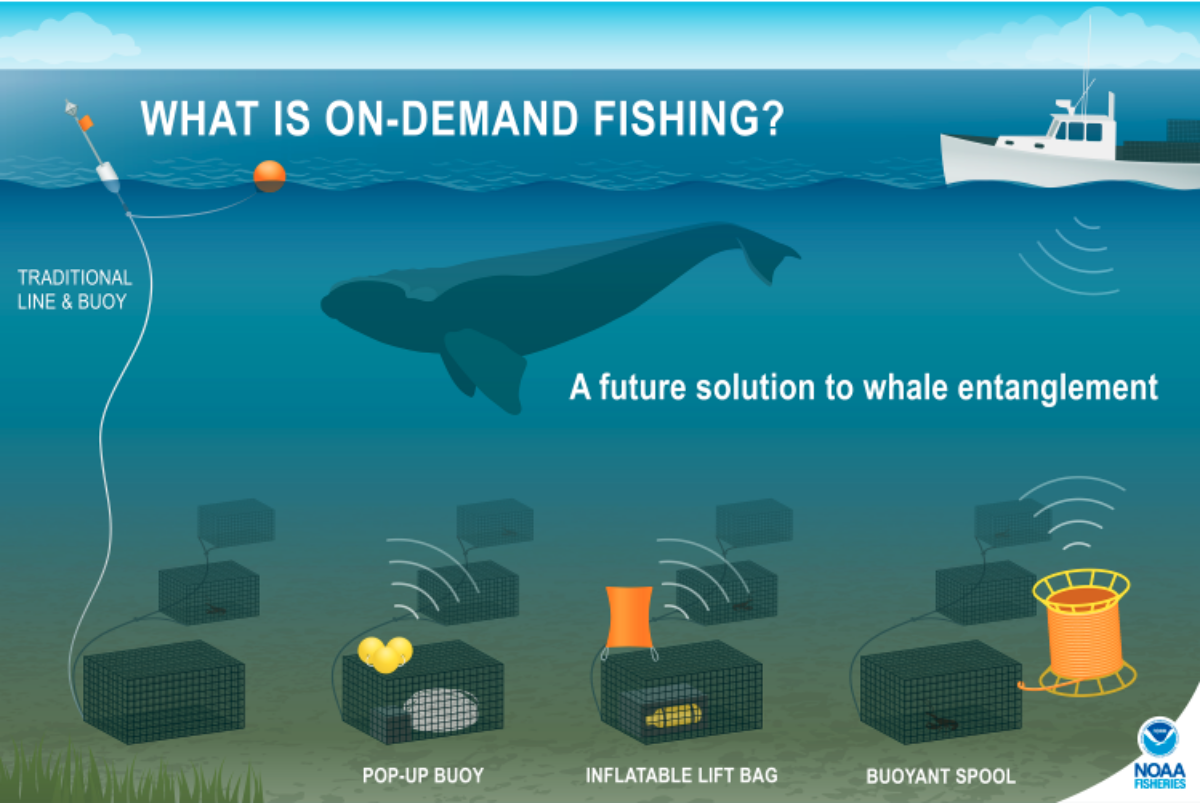
Examples of different types of on-demand (ropeless) systems. Graphic courtesy of NOAA Fisheries.
Gear Lending Libraries
Gear-lending libraries support pot and trap harvesters who are negatively impacted by fishery closures, while also protecting whales from entanglement. These libraries provide access to on-demand gear free of charge to harvesters trained in their use to fish in areas closed to buoy lines, or often with a stipend, when harvesters volunteer to participate in research and trials to improve the design of on-demand systems.
The gear-lending libraries collect feedback from harvesters trialing the equipment. This feedback is used to improve the systems, enabling them to be fished as closely as possible to traditional methods without impacting catch rates.
More information on the four active gear-lending libraries can be found below.
Gear lending programs are designed to support pot and trap harvesters while protecting whales from entanglement. Click on the photos below to go directly to their sites and learn how to get access to this free service.
-
Massachussetts
Northeast Fisheries Science Center
The NEFSC gear library has an extensive collection of on-demand systems that they lend to fishermen for testing and feedback used to improve the gear in real fishing conditions in US northeast Atlantic coast fisheries. -
Nova Scotia, Canada
CanFISH Gear Lending Program
The CanFish Program provides on-demand gear and training to snow crab harvesters throughout Nova Scotia, New Brunswick, and Prince Edward Island so fishers can continue to have access to fishing grounds closed due to the presence of whales. -
California
Marine Sanctuary Foundation
The National Marine Sanctuary Foundation gear library in California collaborates with California dungeness crab harvesters to trial and provide feedback on using ropeless systems in real-world fishing conditions. -
Maine
Maine Innovative Gear Library
The Innovative Gear Library provides alternative gears and training for Maine pot and trap harvesters who are likely to be impacted by federal rules that will prohibit the use of traditional buoy lines in areas to protect endangered whales.
Improvement Projects
In addition to participating in gear-lending programs, multiple fisheries have initiated improvement programs that help fishers get access to on-demand systems that they can use to access closed fishing grounds. These programs, organized by fisheries associations and seafood processors, believe in strength in numbers. By including many harvesters, these programs have more power to influence the development and implementation of on-demand gear.
-
Jonah Crab Gear Innovation Project
Jonah crab is caught off the northeast coast of the United States. Like the larger lobster and snow crab fisheries in the region, this fishery presents an entanglement risk to large whales. This gear innovation project is designed to get ropes out of the water while creating access to closed areas for harvesters.
